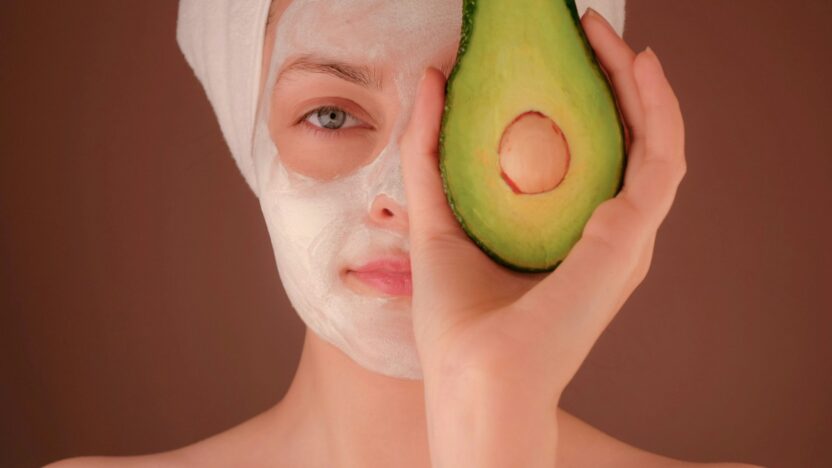Skincare is a daily ritual for many, but conventional products often contain chemicals that harm both your skin and the environment. Switching to natural skincare products is a simple way to care for your skin while supporting a healthier planet. This article explores the benefits of green skincare, highlights key ingredients, and offers practical tips for building a sustainable routine. Whether you’re new to eco-friendly beauty or looking to refine your regimen, these ideas will help you glow naturally. Discover more sustainable living tips at For Organic Life.
Why Green Skincare Matters
Green skincare prioritizes natural, non-toxic ingredients that are gentle on your skin and the environment. Many conventional products contain synthetic fragrances, parabens, and sulfates, which can irritate sensitive skin or pollute waterways. Natural skincare uses plant-based ingredients that are biodegradable and safe. Plus, eco-friendly brands often prioritize sustainable packaging, reducing plastic waste. By choosing green skincare, you protect your health, support ethical companies, and contribute to a cleaner planet.
Key Ingredients for Natural Skincare
Choosing the right ingredients is the foundation of an eco-friendly skincare routine. Look for products with simple, plant-based components that nourish your skin without harmful additives. Aloe vera is a standout ingredient. Its soothing properties calm irritation and hydrate dry skin. Look for aloe-based gels or creams for daily moisturizing.
Coconut oil is another versatile option. It’s a natural moisturizer that works for all skin types, from dry to oily. Use it as a makeup remover or a body lotion. Shea butter, rich in vitamins A and E, is excellent for repairing dry or damaged skin. It’s often found in eco-friendly balms and creams.
For cleansing, opt for products with chamomile or green tea extracts. These ingredients reduce inflammation and fight free radicals. Avoid products with artificial fragrances or dyes, as they can irritate skin. Check ingredient lists for transparency and choose brands that prioritize organic, sustainably sourced materials.
Top Eco-Friendly Skincare Brands
Several brands make natural skincare accessible and effective. Burt’s Bees offers a range of products, like their aloe-based moisturizers and lip balms, made with minimal ingredients. Their packaging is recyclable, aligning with eco-friendly values. Another great option is Herbivore Botanicals, known for their vegan, cruelty-free serums and oils, such as rosehip oil for brightening skin.
For budget-conscious shoppers, Acure provides affordable cleansers and masks with organic ingredients like argan oil and seaweed. Their products are free of parabens and sulfates, making them safe for sensitive skin. Weleda, a long-standing natural brand, uses biodynamic farming for ingredients like calendula, which soothes irritation.
When choosing brands, prioritize those with transparent sourcing and eco-friendly packaging. Research their sustainability practices to ensure they align with your values. These brands make it easy to build a green skincare routine without compromising quality.
DIY Natural Face Masks and Moisturizers
Making your own skincare products is a fun, affordable way to go green. DIY face masks and moisturizers let you control ingredients and avoid plastic packaging. For a hydrating mask, mash half an avocado with a tablespoon of honey. Avocado nourishes dry skin, while honey has antibacterial properties. Apply for 15 minutes, then rinse with warm water.
For oily skin, mix two tablespoons of plain yogurt with a teaspoon of lemon juice. Yogurt exfoliates gently, and lemon juice balances oil production. Use this mask once a week for a fresh glow. For a simple moisturizer, blend one part melted coconut oil with one part aloe vera gel. Store in a reusable glass jar and apply daily.
These recipes use pantry staples, reducing waste and costs. Always patch-test new mixtures to ensure they suit your skin. DIY skincare is a sustainable way to pamper yourself while keeping your routine eco-friendly.
Reducing Packaging Waste in Skincare
Packaging waste is a major issue in the beauty industry, with billions of plastic bottles ending up in landfills yearly. To make your skincare routine greener, choose products with minimal or recyclable packaging. Look for brands using glass jars, metal tins, or compostable materials. Some companies, like Lush, offer package-free products, such as solid face cleansers.
Refillable systems are another great option. Many eco-friendly brands now sell refill pouches that use less plastic than traditional bottles. You can also shop at bulk stores to refill your own containers with liquid soaps or lotions. When recycling, rinse containers thoroughly to avoid contamination.
At home, repurpose glass jars for storing DIY products or small items. By prioritizing low-waste packaging, you reduce your environmental footprint while keeping your skin healthy.
Building a Sustainable Skincare Regimen
A sustainable skincare routine is simple, consistent, and eco-conscious. Start with a gentle cleanser, like one with chamomile or castile soap. Follow with a toner, such as witch hazel, to balance your skin’s pH. Moisturize with a natural cream or oil, like shea butter or jojoba oil, depending on your skin type.
Limit your routine to a few high-quality products to avoid waste. Use multi-purpose items, like coconut oil, which can serve as a moisturizer, makeup remover, or lip balm. Cleanse morning and night, but avoid over-washing, which can strip natural oils.
Store products in a cool, dry place to extend their shelf life. Check expiration dates to avoid waste, and use small amounts to make products last longer. For inspiration on sustainable beauty, visit For Organic Life. A streamlined routine keeps your skin glowing and the planet healthier.
Final Thoughts
Switching to natural skincare products is a rewarding step toward a greener lifestyle. By choosing plant-based ingredients, supporting eco-friendly brands, and reducing packaging waste, you can care for your skin and the environment. Start small with a DIY mask or a new natural moisturizer, and build a routine that fits your needs. Your skin will thank you, and so will the planet.




